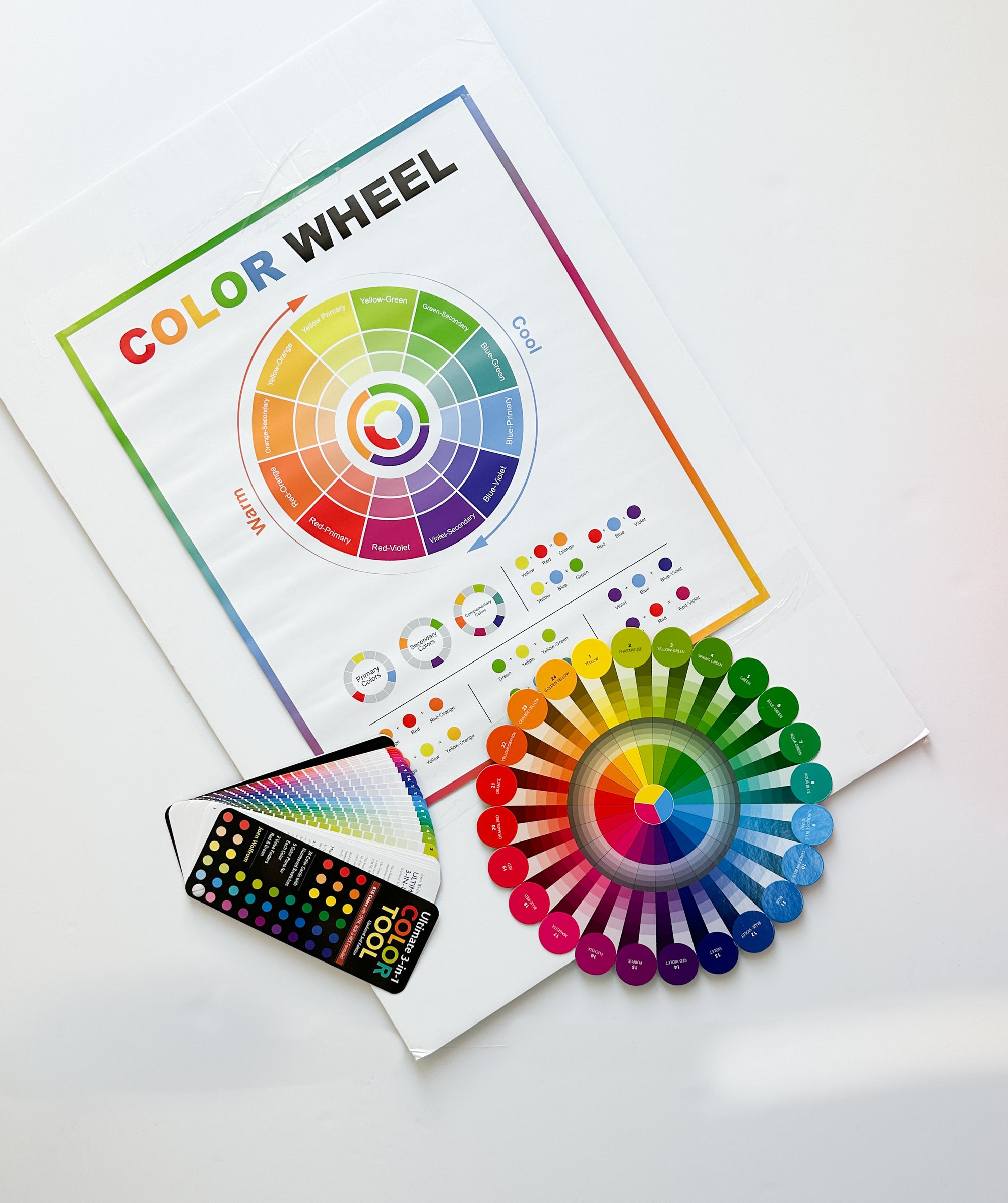Color and How You Can Use it to Make Your Style POP
•Posted on February 06 2024

Today on the blog, we're diving into Color Theory. If you're an artist, you have already studied this fascinating topic and live by it, but not everyone understands Color Theory. This topic can get detailed VERY fast, so today we're just going over the basics which will hopefully inspire you to dig deeper and make more outfits that POP using color.
First, let's define what color theory is. Color theory, as it relates to fashion, is the study of how colors interact with each other and how they can be combined to create visually appealing outfits. It involves understanding the principles of color harmony, contrast, and balance to effectively communicate a desired aesthetic or mood through clothing choices.
In the context of fashion, color theory encompasses several key aspects:
1. Color Wheel: The color wheel serves as the foundation of color theory in fashion. It organizes colors in a circular format, showing the relationships between primary colors (red, blue, yellow), secondary colors (orange, green, purple), and tertiary colors (mixtures of primary and secondary colors). Fashion designers and stylists often refer to the color wheel to guide their choices in combining colors for outfits.
 2. Color Harmony: Color harmony refers to the pleasing arrangement of colors in an outfit. This includes understanding concepts such as complementary colors (opposite on the color wheel), analogous colors (adjacent on the color wheel), and triadic colors (evenly spaced on the color wheel). By employing these color harmonies, fashion enthusiasts can create outfits that are visually balanced and cohesive.
2. Color Harmony: Color harmony refers to the pleasing arrangement of colors in an outfit. This includes understanding concepts such as complementary colors (opposite on the color wheel), analogous colors (adjacent on the color wheel), and triadic colors (evenly spaced on the color wheel). By employing these color harmonies, fashion enthusiasts can create outfits that are visually balanced and cohesive.
 3. Color Temperature: Colors can be categorized as either warm or cool based on their undertones. Warm colors (e.g., reds, oranges, yellows) evoke feelings of energy and warmth, while cool colors (e.g., blues, greens, purples) have a calming and soothing effect. Understanding color temperature is essential for creating outfits that convey a particular mood or vibe.
3. Color Temperature: Colors can be categorized as either warm or cool based on their undertones. Warm colors (e.g., reds, oranges, yellows) evoke feelings of energy and warmth, while cool colors (e.g., blues, greens, purples) have a calming and soothing effect. Understanding color temperature is essential for creating outfits that convey a particular mood or vibe.
4. Tints, Tones, and Shades: Adjusting the intensity and brightness of colors can significantly impact the overall look of an outfit. Tints are created by adding white to a color, tones by adding gray, and shades by adding black. Fashion designers often play with tints, tones, and shades to add depth and dimension to their clothing designs. The color wheel above shows the colors in very bright tones. But each color can be broken into darker and lighter. The color wheel can become so many colors and shades. Keep all those tints, tones and shades in mind when focusing on color.
5. Color Psychology: Colors have psychological associations that can influence how they are perceived in fashion. For example, red is often associated with passion and confidence, while blue is associated with calmness and trustworthiness. By understanding color psychology, fashion enthusiasts can use colors strategically to convey certain emotions or messages through their clothing choices.
Overall, color theory in fashion is about understanding the principles of color and applying them creatively to create stylish and harmonious outfits that reflect individual personality and taste.
Choose a Dominant Color: Start with a dominant color for your outfit. This could be based on personal preference, the occasion, or seasonal trends.
Complementary Colors: Pairing colors that are opposite each other on the color wheel for a bold contrast.
Playing with Tints, Tones, and Shades: Experiment with lighter and darker variations of your chosen colors to add depth and interest to your outfit. This is another way to provide depth to a Monochromatic outfit that can be really cool.
Embracing Color Psychology: As described above, think through the emotion you are wanting to evoke with one specific outfit or event. Perhaps the psychology of the event means it becomes your dominant color.

The above outfit is a great place to start this Spring when starting to understand Color Theory. The Lane Ruched Sleeved blazer, paired with the Kelsey Cropped Flare jeans from Kut from the Kloth and the High Neck Tank in Tofu work together to create a very simple, classy outfit together.
Comments
1 Comments
-

Posted by Sylvia | February 06, 2024
Leave a CommentGreat review of color! It’s not easy, but you incorporate it so well in your outfits! Loving your outfit at the end!